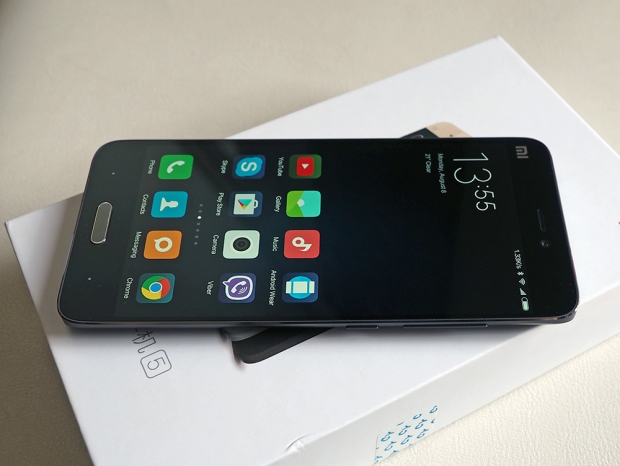Index
Xiaomi Mi5 Specs and Performance
This is where it gets really interesting. On top of the state-of-the-art Qualcomm Snapdragon 820 processor, the Mi5 also boasts fast memory and storage.
The phone relies on LPDDR4 memory and UFS 2.0 storage. If this sounds familiar, we should note that Samsung introduced both technologies in the Galaxy S6. However, Xiaomi did it on a budget, as its flagships tend to cost substantially less than Samsung products. UFS 2.0 storage is up to three time faster than eMMC 5.1 storage, which means it’s practically on a par with SSD drives of yesteryear.
In addition to its Kryo custom CPU cores, the Snapdragon 820 also features Adreno 530 graphics, promising a quantum leap in performance compared to the Mi4.
Let’s take a closer look at the spec sheet.
Xiaomi Mi5 Specs:
- SoC: Qualcomm Snapdragon 820
- CPU: Four 64-bit Qualcomm Kyro CPU cores up to 2.15GHz - 32GB model up to 1.8GHz
- GPU: Adreno 530 up to 624MHz
- RAM: 3GB LPDDR4 (up to 1866MHz)
- Storage: 64GB UFS 2.0 internal storage, not expandable
- Display: 5.15-inch 1080p IPS panel
- OS: Android 6.0 with MIUI 7 on top
- Rear camera: 16-megapixel Sony IMX298 sensor, f/2.0 aperture, PDAF, 4-axis OIS
- Front facing camera: 4-megapixel sensor, 2um pixel size
- Battery: 3000mAh, integrated
- Dimensions: 144.6mm x 69.2mm x 7.3mm
- Weight: 129g
- WiFi and Bluetooth: 802.11b/g/n/ac WiFi and Bluetooth 4.1
- Sensors: ambient light, direction, accelerometer, compass, proximity, GPS, A-GPS
- Other noteworthy features: IR blaster, NFC
- SIM card: dual SIM (nano SIM), dual standby
- Network support:
2G: GSM 850/900/1800/1900MHz
3G: WCDMA 850/9001900/2100MHz
4G: FDD-LTE: 1800/2600MHz, TDD-LTE: B38 / B39 / B40 / B41 (Make sure to check regional compatibility prior to making a purchase)
Despite the fact that prices for the entry-level Mi5 start at about $350, we are looking at a high-end spec. Most of the components are on a par with 2016 flagship phones, although there are some differences.
The Mi5 does not support technologies like wireless charging and Force Touch, but then again, it’s the first Xiaomi smartphone with NFC support. It is also the first Mi with a physical home button, which features an integrated fingerprint scanner. The f/2.0 lens on the main camera feels slightly worse than the optics used on iPhones and Samsung’s latest Galaxy flagships, but 4-axis OIS should go a long way towards improving image quality (especially if you’re into video).
Benchmark results prove that Xiaomi’s latest flagship can hold its own against significantly pricier devices from bigger brands. It’s not just the new Qualcomm processor, however. The Mi5 packs fast RAM and storage, which helps in many situations.

In 3D Mark, the Mi5 manages to outpace the competition, even the HTC 10, which is based on the same processor.
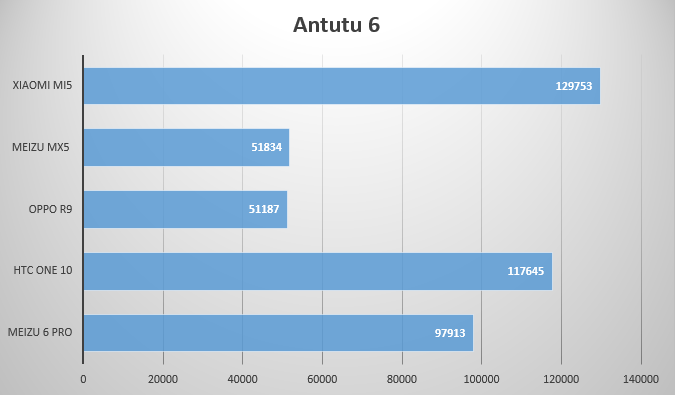
We see similar results in Antutu 6. The performance gap between the Snapdragon 820 and budget Cortex-A53 octa-cores is staggering.
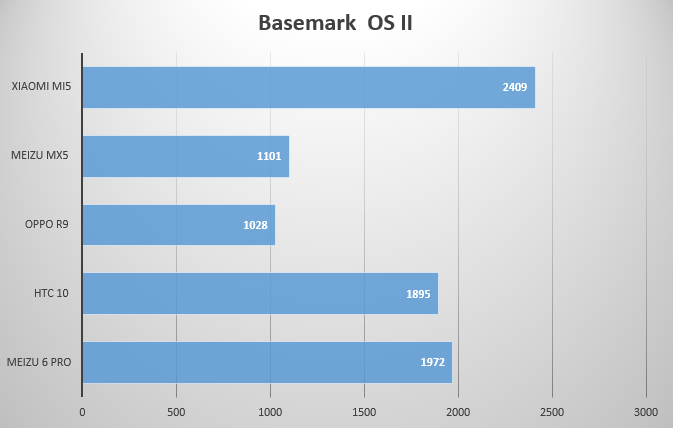
Basemark OS II also delivers good results. This benchmark also takes into account storage speed and a few other factors.
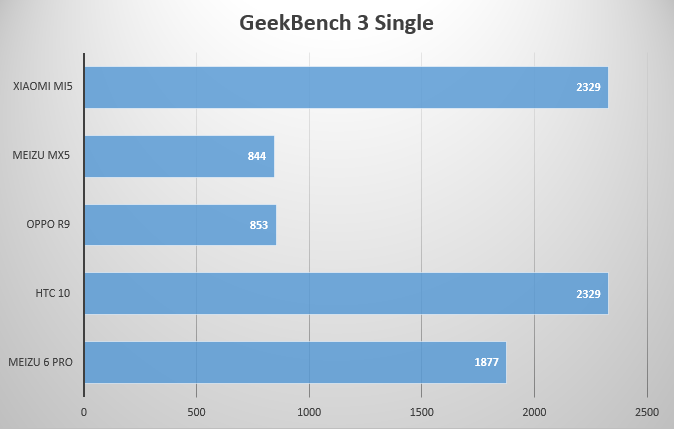
The Geekbench single-core score is identical to the HTC 10.
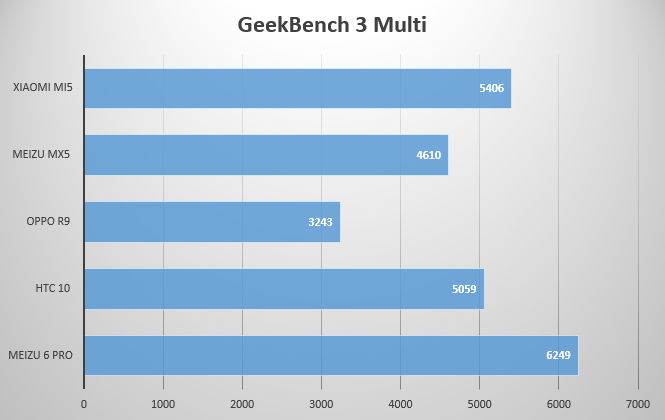
However, in the multi-core test, the Meizu 6 Pro and its many CPU cores pull ahead.

The Mi5 ends up marginally faster than the HTC 10 in PC Mark.
Benchmarks don’t always paint the full picture, so what about the subjective feeling? Well, it’s great. The phone is significantly more responsive than Xiaomi devices based on the Snapdragon 808 and 650, which feature slower RAM and storage.
We have no complaints about GPS performance, either.

Bottom line: in terms of price/performance, the Mi5 is in a league of its own. It delivers as much performance as flagship phones that cost twice as much, which is impressive to say the least.

